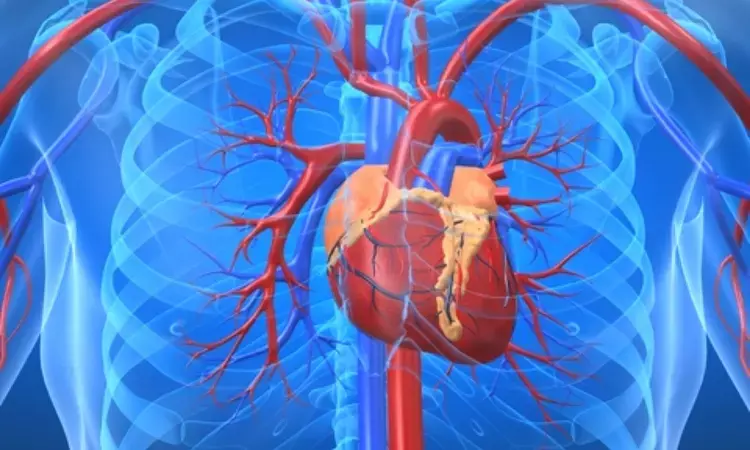- Home
- Medical news & Guidelines
- Anesthesiology
- Cardiology and CTVS
- Critical Care
- Dentistry
- Dermatology
- Diabetes and Endocrinology
- ENT
- Gastroenterology
- Medicine
- Nephrology
- Neurology
- Obstretics-Gynaecology
- Oncology
- Ophthalmology
- Orthopaedics
- Pediatrics-Neonatology
- Psychiatry
- Pulmonology
- Radiology
- Surgery
- Urology
- Laboratory Medicine
- Diet
- Nursing
- Paramedical
- Physiotherapy
- Health news
- Fact Check
- Bone Health Fact Check
- Brain Health Fact Check
- Cancer Related Fact Check
- Child Care Fact Check
- Dental and oral health fact check
- Diabetes and metabolic health fact check
- Diet and Nutrition Fact Check
- Eye and ENT Care Fact Check
- Fitness fact check
- Gut health fact check
- Heart health fact check
- Kidney health fact check
- Medical education fact check
- Men's health fact check
- Respiratory fact check
- Skin and hair care fact check
- Vaccine and Immunization fact check
- Women's health fact check
- AYUSH
- State News
- Andaman and Nicobar Islands
- Andhra Pradesh
- Arunachal Pradesh
- Assam
- Bihar
- Chandigarh
- Chattisgarh
- Dadra and Nagar Haveli
- Daman and Diu
- Delhi
- Goa
- Gujarat
- Haryana
- Himachal Pradesh
- Jammu & Kashmir
- Jharkhand
- Karnataka
- Kerala
- Ladakh
- Lakshadweep
- Madhya Pradesh
- Maharashtra
- Manipur
- Meghalaya
- Mizoram
- Nagaland
- Odisha
- Puducherry
- Punjab
- Rajasthan
- Sikkim
- Tamil Nadu
- Telangana
- Tripura
- Uttar Pradesh
- Uttrakhand
- West Bengal
- Medical Education
- Industry
Can CAC absence identify patients with chest pain who can safely avoid additional downstream testing?

USA: The findings from a new study, published in JACC: Cardiovascular Imaging, support the role of a CAC score of 0 as a gatekeeper for more advanced imaging among patients with either stable or acute chest pain (CP).
The study found that among more than 92,000 patients presenting with chest pain, CAC absence was associated with a very low prevalence of obstructive CAD, a low annualized risk of major adverse cardiac events, and a low prevalence of nonobstructive CAD.
There is not much consensus on whether the absence of coronary artery calcium (CAC) can help to identify chest pain patients who can safely avoid additional downstream testing. Considering this, Ali M. Agha, Baylor College of Medicine, Houston, Texas, USA, and colleagues aimed to investigate the use of CAC assessment for ruling out obstructive coronary artery disease (CAD) in patients with stable and acute CP, at low-to-intermediate risk of obstructive CAD undergoing coronary computed tomography angiography (CTA) by conducting a systematic review and meta-analysis.
For this purpose, the researchers searched the online databases for studies published between 2005 and 2021. It included studies examining the relationship between CAC and obstructive CAD (≥50% coronary luminal narrowing) on coronary CTA among patients with stable and acute CP.
Salient findings of the study include:
- The study included 19 papers comprising 79,903 patients with stable CP and 13 papers including 12,376 patients with acute CP undergoing simultaneous CAC and coronary CTA assessment.
- 45% of patients with stable CP and 58% of patients with acute CP had CAC = 0.
- The negative predictive values for CAC = 0 ruling out obstructive CAD were 97% and 98% among patients with stable and acute CP, respectively.
- The prevalence of nonobstructive CAD among those with CAC = 0 was 13% among those with stable CP and 9% among those with acute CP.
- A CAC score of zero predicted a low incidence of major adverse cardiac events among patients with stable CP (0.5% annual event rate) and acute CP (0.8% overall event rate).
The authors conclude, "the results support the role of CAC = 0 in a value-based health care delivery model as a "gatekeeper" for more advanced imaging among patients presenting with CP."
Reference:
The Prognostic Value of CAC Zero Among Individuals Presenting With Chest Pain: A Meta-Analysis. JACC Cardiovasc Imaging 2022 Jun 15;[EPub Ahead of Print], AM Agha, J Pacor, GR Grandhi, et al
Dr Kamal Kant Kohli-MBBS, DTCD- a chest specialist with more than 30 years of practice and a flair for writing clinical articles, Dr Kamal Kant Kohli joined Medical Dialogues as a Chief Editor of Medical News. Besides writing articles, as an editor, he proofreads and verifies all the medical content published on Medical Dialogues including those coming from journals, studies,medical conferences,guidelines etc. Email: drkohli@medicaldialogues.in. Contact no. 011-43720751


